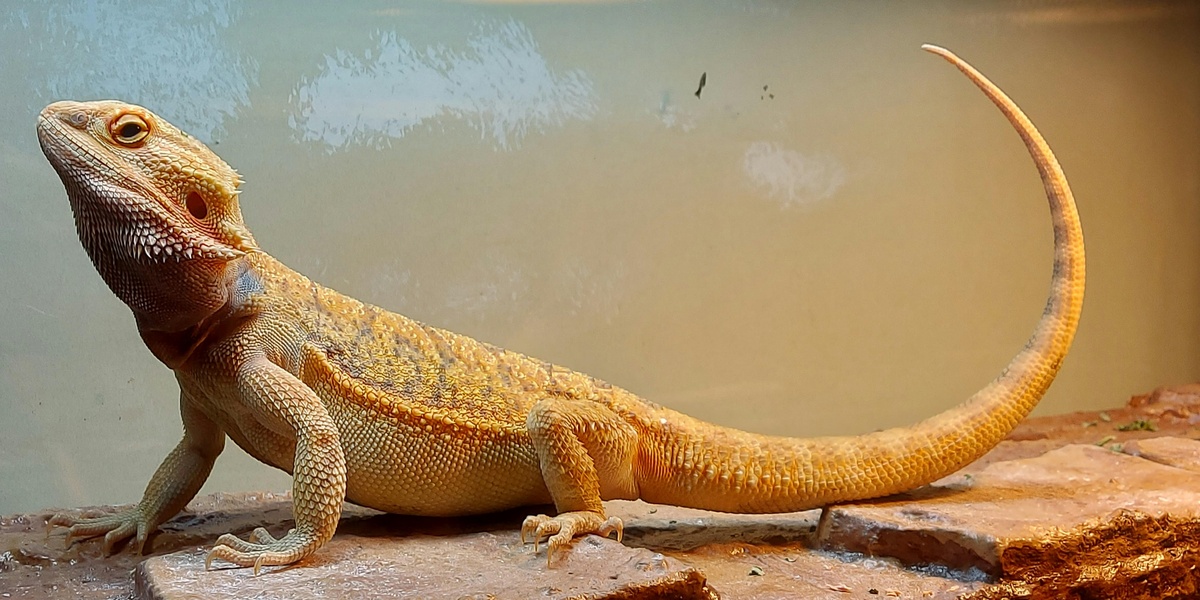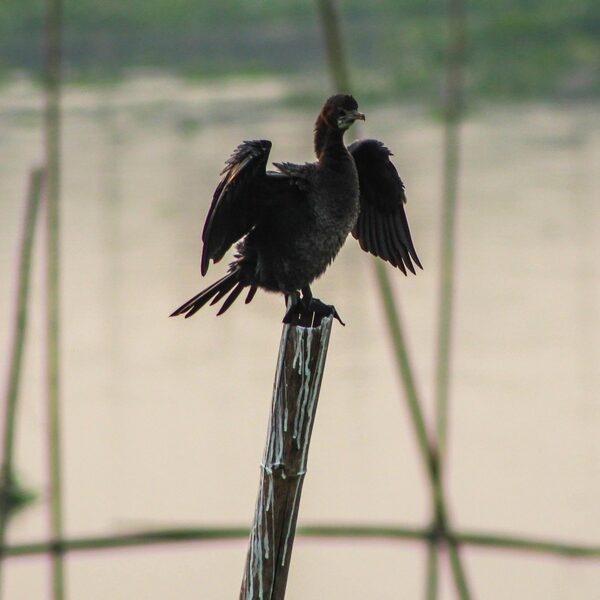Bearded dragons (Pogona vitticeps) rose sharply in popularity in the U.S. pet trade during the 1990s and today rank among the top reptile pets for families and beginner keepers.
That boom matters because these lizards are long-lived (often 8–12 years in captivity), have clear care needs, and respond strongly to owner mistakes like poor UVB, improper temperatures, or low-quality diets.
This article breaks down 10 essential characteristics of a bearded dragon—physical traits, behavior and communication, husbandry and lifespan, plus health and reproductive signals—so prospective and current owners can spot normal versus worrying signs and support good welfare. Expect practical numbers (lengths, temps, clutch sizes), product names, and vet-minded advice. Next up: physical characteristics you can check at a glance.
Physical characteristics
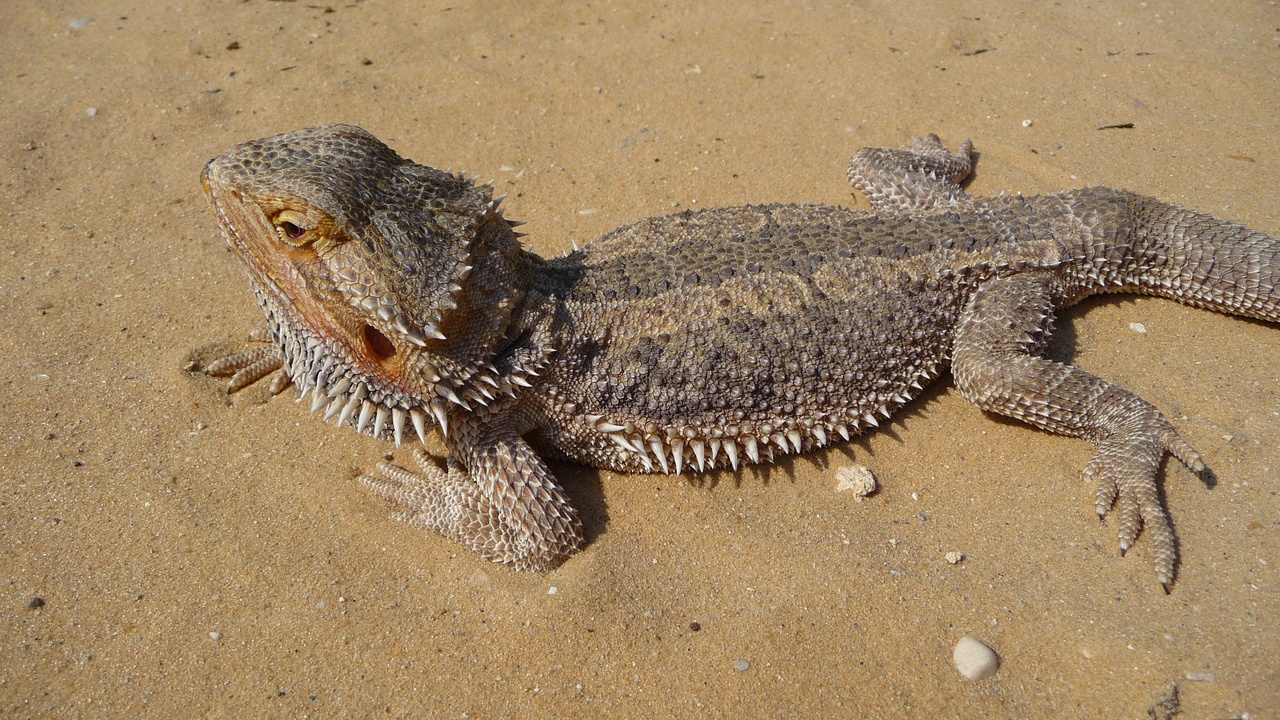
1. Size and body shape
Adult bearded dragons typically reach 16–24 inches from snout to tail, with males often heavier-bodied and females a bit leaner. Juveniles grow rapidly during the first 6–18 months—many gain most of their length in that window—then growth slows and often plateaus by 2–3 years of age.
Practical implications: an adult usually needs an enclosure equivalent to a 75–120 gallon open-topped terrarium (commonly a 4×2×2 ft for a full-size animal), while juveniles do better in smaller secure tubs that are upgraded as they grow. Handling changes too—larger animals tolerate longer holds but require more support under the body and tail.
2. Distinctive beard and coloration
The eponymous “beard” is a spiny throat pouch that darkens and inflates during displays; a blackened beard commonly signals stress, defense, or dominance, while brightening or richer tones can appear during breeding. Be aware that beard color alone isn’t a diagnosis but a clue when paired with behavior.
Captive breeders produce morphs such as “hypo” and “leatherback” that change overall hues and scale patterns, yet selective breeding can affect vigor. Veterinary sources recommend reading color changes alongside appetite and activity to assess welfare—for example, a chronically dark beard with anorexia warrants a vet check.
3. Scales, spikes and head shape
Bearded dragons show a triangular head, keeled scales, and rows of spiny scales along the throat and flanks that offer protection and aid species recognition. Scale texture and head proportions are reliable ID features for Pogona vitticeps across ages.
Shed cycles reflect health: juveniles often shed every 2–4 weeks, adults every few months. Retained shed around toes or the tail can cause constriction and needs a humid hide or veterinary attention if persistent.
Behavior and communication
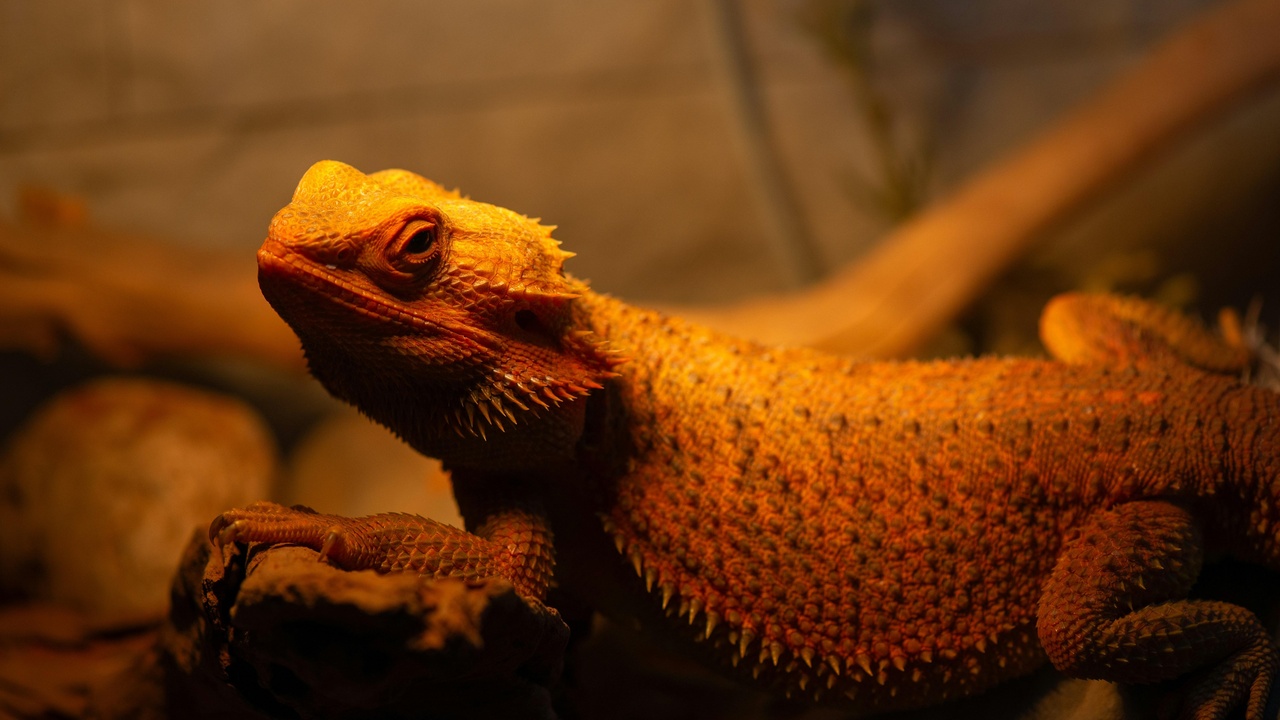
4. Arm-waving and head-bobbing (social signals)
Arm-waving typically signals submission or recognition; a slow wave often means the dragon is acknowledging another animal or a person. By contrast, rapid head-bobbing signals dominance, territoriality, or courtship and is particularly common in adult males.
Keepers should read frequency and context: juveniles wave more often, while two males introduced together may escalate head-bobbing into chasing or biting—separate males showing repeated bobs. Use these gestures to reduce stress: avoid handling during intense displays and provide hiding spots to defuse tension.
5. Thermoregulatory basking behavior
Bearded dragons are ectotherms and regulate body temperature by basking. Recommended basking-spot temps are about 95–110°F (35–43°C), with a cool side near 75–85°F (24–29°C); cage gradients support digestion and activity.
Morning basking jump-starts digestion and activity; if a dragon stays lethargic or refuses food, check temperatures. Place probe thermometers at bask and cool areas and use quality gear like the Zoo Med ReptiSun 10.0 for UVB and ceramic heat emitters from known brands when needed.
6. Brumation (seasonal dormancy)
Brumation is reptile dormancy similar to hibernation; many bearded dragons show it in cooler months, often for 1–3 months depending on individual and climate. Signs include reduced appetite, longer stays in hides, and sluggishness.
Care adjustments: monitor weight weekly, keep fresh water available, and lower temperatures gradually. Vets advise against abruptly re-warming a brumating animal—slow ramps over days are safer. A keeper example: reducing photoperiod to ~8–10 hours and checking weight helped one dragon brumate safely for six weeks.
Diet, care and lifespan
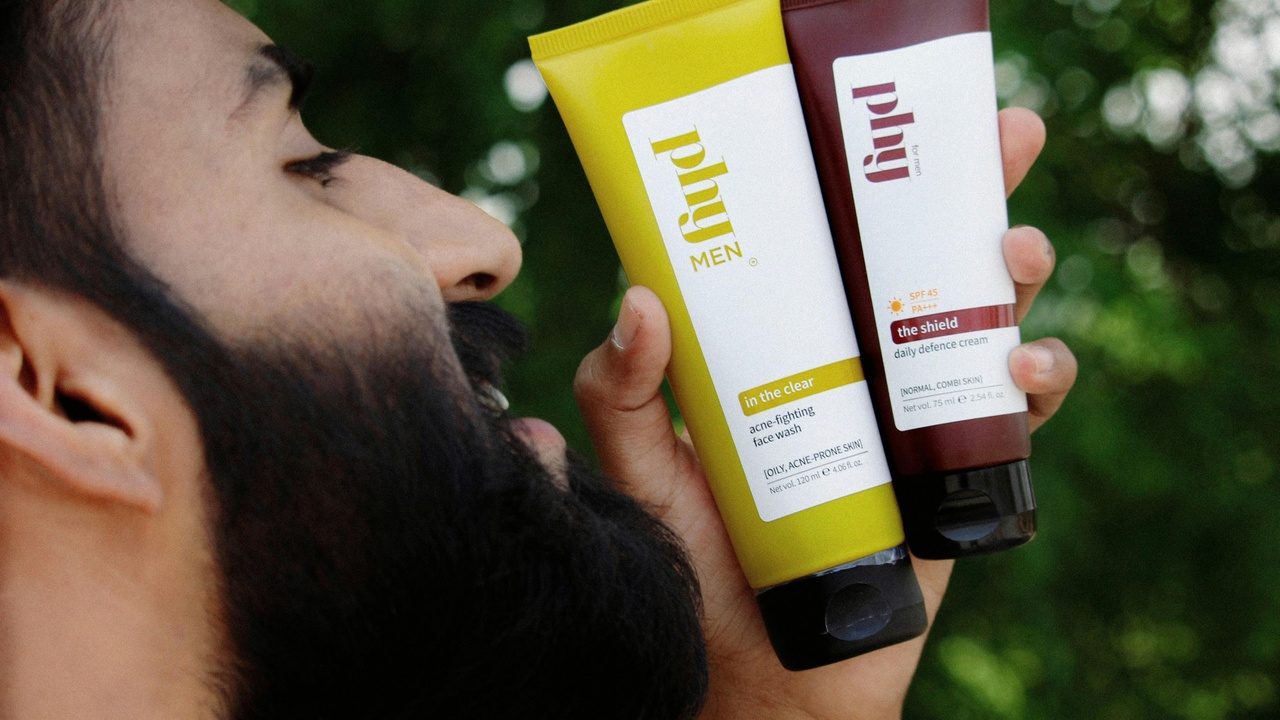
7. Omnivorous diet and feeding habits
Bearded dragons are opportunistic omnivores: juveniles need more protein, adults shift toward vegetables. A common guideline is juveniles ~70% insects/30% vegetables, adults ~20–30% insects/70–80% vegetables, though vets vary on exact ratios.
Feed gut-loaded feeder insects like dubia roaches or crickets; dust insects with plain calcium powder and use multivitamins sparingly. Offer dark leafy greens such as collards and mustard greens and veggies like butternut squash. Products such as Repashy can supplement powdered diets for picky eaters.
Practical schedule: juveniles feed daily, adults often once every day or every other day depending on condition. Track weight to adjust amounts and avoid obesity or nutritional deficits.
8. Lifespan and growth rate
Typical captive lifespan is about 8–12 years, with many reaching 10+ years on consistent care and some living to 15. Sexual maturity arrives roughly between 8–18 months, and growth slows after 2–3 years.
Factors that shorten lifespan include poor diet, inadequate UVB exposure and metabolic bone disease. Keepers report dragons reaching 12 years with steady diet, annual vet checks, and consistent husbandry practices; annual weight logs and checkups catch problems early.
Health, reproduction and domestication
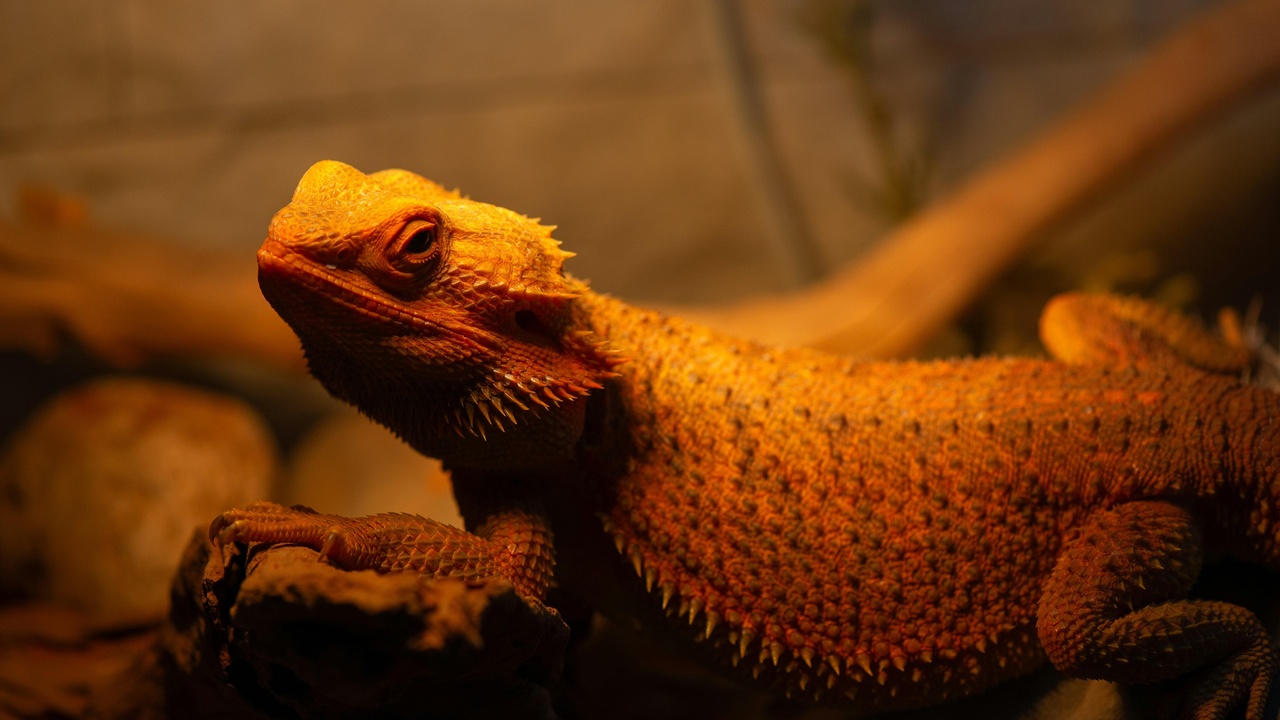
9. Reproductive traits and egg-laying
Females can lay multiple clutches per year under suitable conditions. Clutch sizes often range from about 10 up to 30 eggs depending on female size, health and whether earlier clutches were laid that season.
Incubation commonly spans about 55–75 days at standard breeder temps; many breeders incubate at roughly 28–32°C (82–90°F) while closely monitoring humidity to optimize hatch rates. Responsible breeders plan rehoming and avoid indiscriminate breeding to prevent welfare issues.
10. Common health indicators and longevity factors
Red flags include weight loss, persistent lack of appetite, swollen limbs or crooked jaws (metabolic bone disease), abnormal stool (possible parasites), and retained shed on toes or tail. Spotting these early improves outcomes.
Prevention: quality UVB exposure (replace bulbs every 6–12 months per manufacturer guidance), calcium supplementation, balanced diet, and clean habitat. Typical vet interventions include deworming, fluid therapy, or calcium/vitamin D3 treatment paired with husbandry correction. Seek an exotic-pet veterinarian or consult AVMA resources for complex cases.
Summary
- Size and appearance: adults usually reach 16–24 inches; beard darkening and scale condition give fast clues to stress or health.
- Behavioral cues: arm-waves, head-bobs and basking patterns tell you about social status and thermoregulation—watch context and frequency.
- Care essentials that most affect longevity: reliable UVB, correct temperatures (95–110°F basking spot), and life-stage-appropriate diet with calcium supplementation.
- Reproduction and health watchpoints: clutches commonly number 10–30 eggs with ~55–75 day incubation; seek vet care for MBD, parasites, or retained shed and replace UVB bulbs every 6–12 months.
- Action step: schedule an annual exam with an exotic-pet veterinarian and consider joining a local reptile or herpetology group for hands-on advice and community support.
